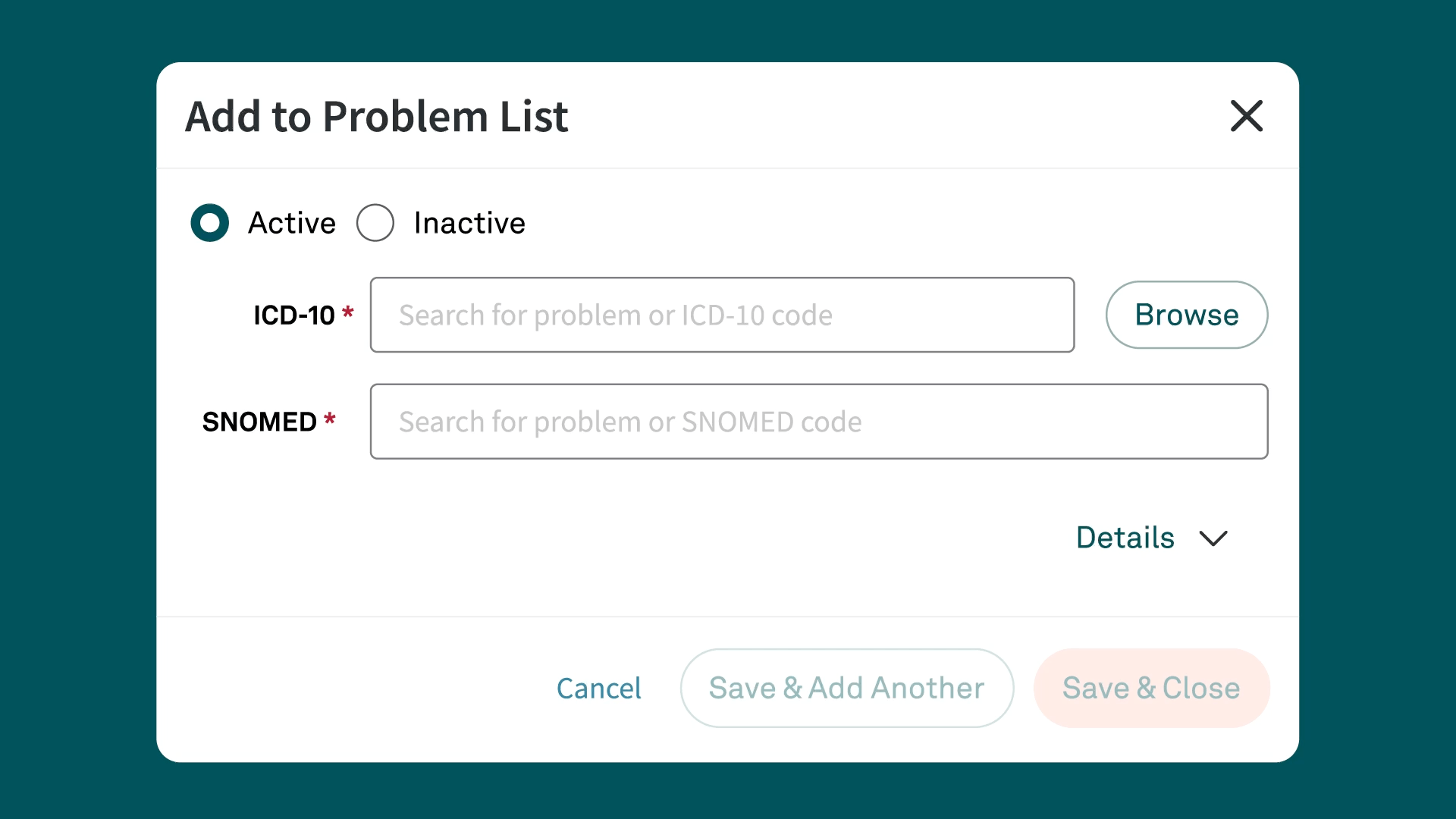ICD-10 Code N94.89
Other specified conditions associated with female genital organs and menstrual cycle
What is the code N94.89?
Download your free resource now
Access it instantly — just complete the form

ICD-10-CM code N94.89 is designated for "other specified conditions associated with female genital organs and menstrual cycle." Healthcare providers use this code to document various gynecological conditions that do not fall under more specific ICD-10 codes but are nonetheless significant for accurate diagnosis and treatment planning.
Detailed description of N94.89
N94.89 encompasses a range of gynecological conditions that affect the female genital organs and menstrual cycle but are not classified under more specific categories. These conditions can include unusual menstrual symptoms and other gynecological abnormalities that require medical attention. The "other specified" aspect of this code indicates that while the condition is recognized, it does not fit neatly into predefined categories, necessitating a broader diagnostic label.
Symptoms commonly associated with N94.89
Symptoms linked to N94.89 can vary widely due to the broad nature of the conditions it covers. Common symptoms may include:
- Menstrual cramps that are not attributed to common causes like dysmenorrhea
- Retained or suppressed menstruation
- Other unspecified symptoms related to the menstrual cycle and genital organs
These symptoms can significantly impact a patient's quality of life and may require thorough diagnostic evaluation to manage effectively.
Related and similar ICD-10 codes
Several ICD-10 codes are related to or can be confused with N94.89. These include:
- N94.1: Dyspareunia (painful intercourse)
- N94.4: Primary dysmenorrhea
- N94.5: Secondary dysmenorrhea
- N94.6: Dysmenorrhea, unspecified
- N94.81: Vulvodynia
These related codes help in differentiating specific conditions from the broader category represented by N94.89.
Appropriate usage and guidelines for N94.89
When using the N94.89 code, ensure that the condition being documented does not fit more appropriately under another specific ICD-10 code. Use this code when the gynecological condition has been identified by the provider, but a more specific code is not available.
Common pitfalls in coding with N94.89
One common pitfall in coding with N94.89 is using it as a catch-all for any gynecological issue without proper documentation. This can lead to inaccuracies in patient records and potential issues with insurance claims. Another pitfall is failing to consider more specific codes that might better describe the patient's condition. Coders should always review the patient's medical history and clinical presentation comprehensively before assigning this code.
Key resources for N94.89 coding
Several resources can assist healthcare providers and coders in accurately using the N94.89 code:
- ICD-10-CM Official Guidelines for Coding and Reporting: These guidelines provide comprehensive instructions for using ICD-10 codes.
- American College of Obstetricians and Gynecologists (ACOG): Offers clinical guidelines and resources for managing gynecological conditions.
- Centers for Medicare & Medicaid Services (CMS): CMS offers a wealth of resources and updates on coding practices, including webinars, manuals, and bulletins.
- Professional coding organizations: Organizations like the American Health Information Management Association (AHIMA) and the American Academy of Professional Coders (AAPC) offer educational resources, certifications, and support for medical coders.
Conclusion
Use ICD-10-CM code N94.89 for documenting various conditions associated with the female genital organs and menstrual cycle when a more specific code is not available. Accurately using this code requires a thorough review of the documentation to ensure other more specific diagnoses have not been identified. By understanding the appropriate application and common pitfalls, healthcare providers and coders can ensure accurate and effective medical record-keeping, leading to better patient care and streamlined billing processes.
Simplify ICD-10 code documentation with Tebra
Tebra’s EHR+ gives you quick searches and Systematized Nomenclature of Medicine (SNOMED) field names for efficient code documentation. Plus, Tebra automatically saves ICD-10 to SNOMED mapping for future searches, streamlining your workflow.

Discover how Tebra helps providers effortlessly document health-related issues and conditions in this detailed post.
Similar Codes
Stay Ahead with Expert Healthcare & Billing Insights
Get the latest industry updates, financial tips, and expert strategies — delivered straight to your inbox.

